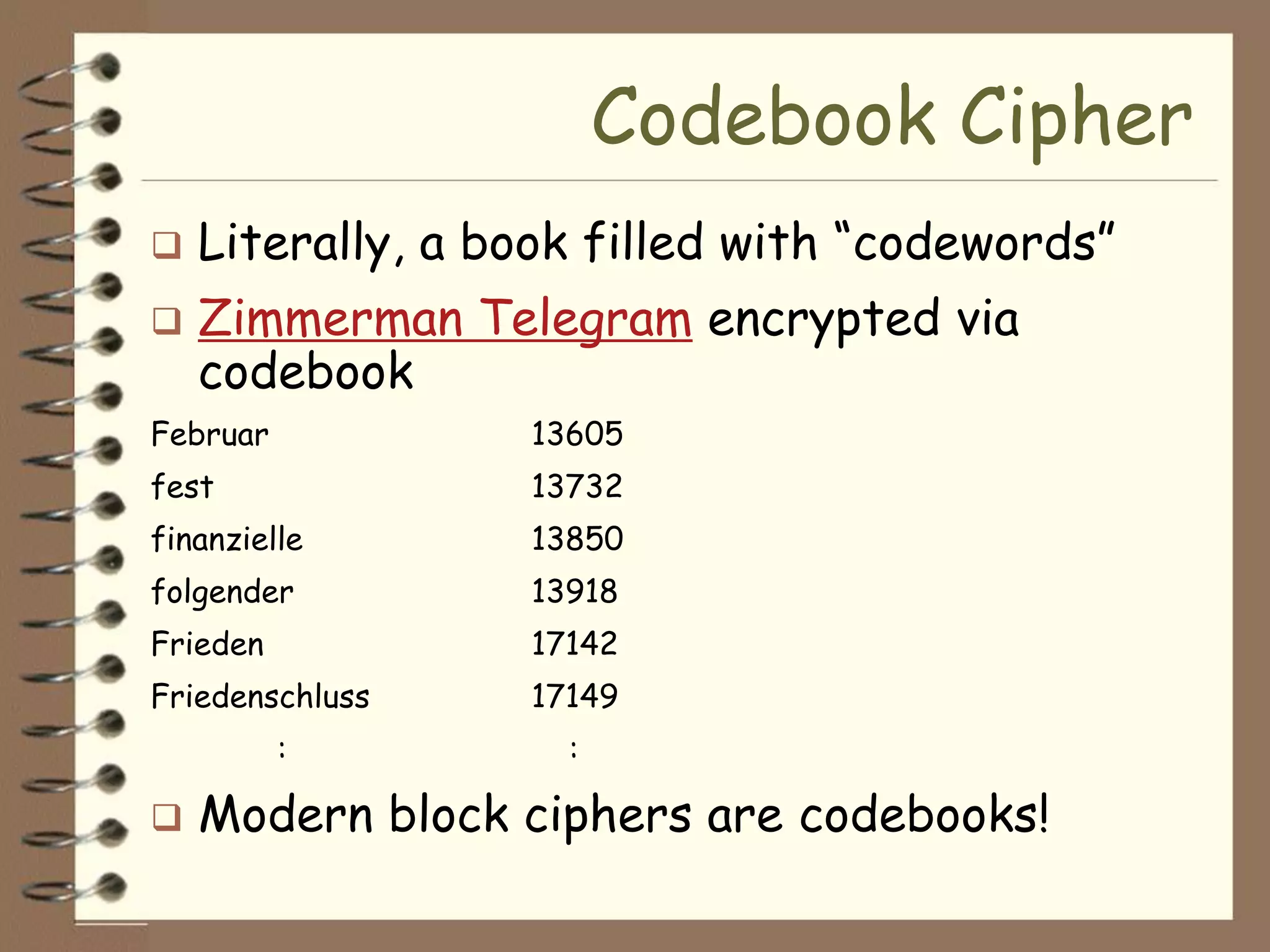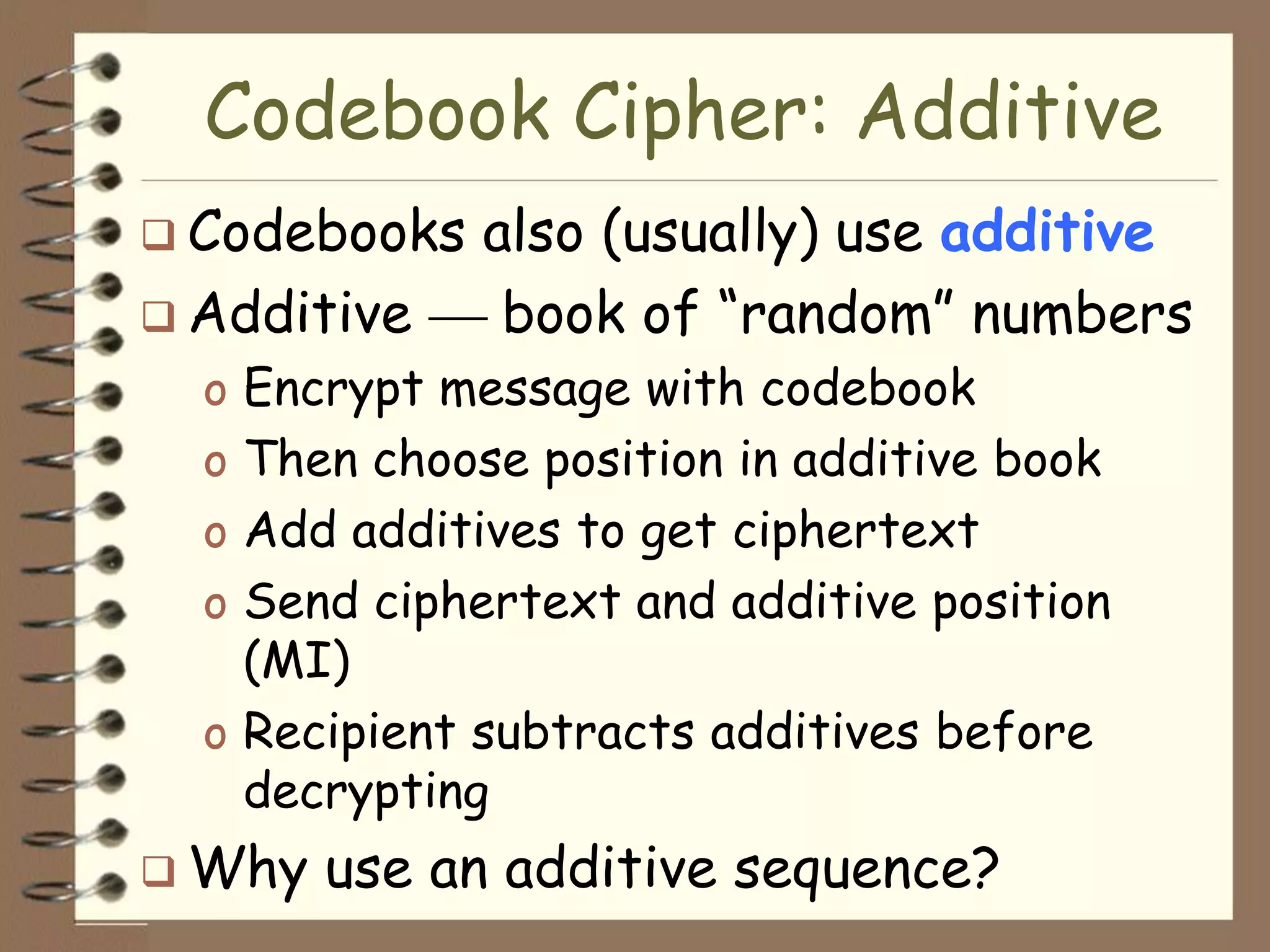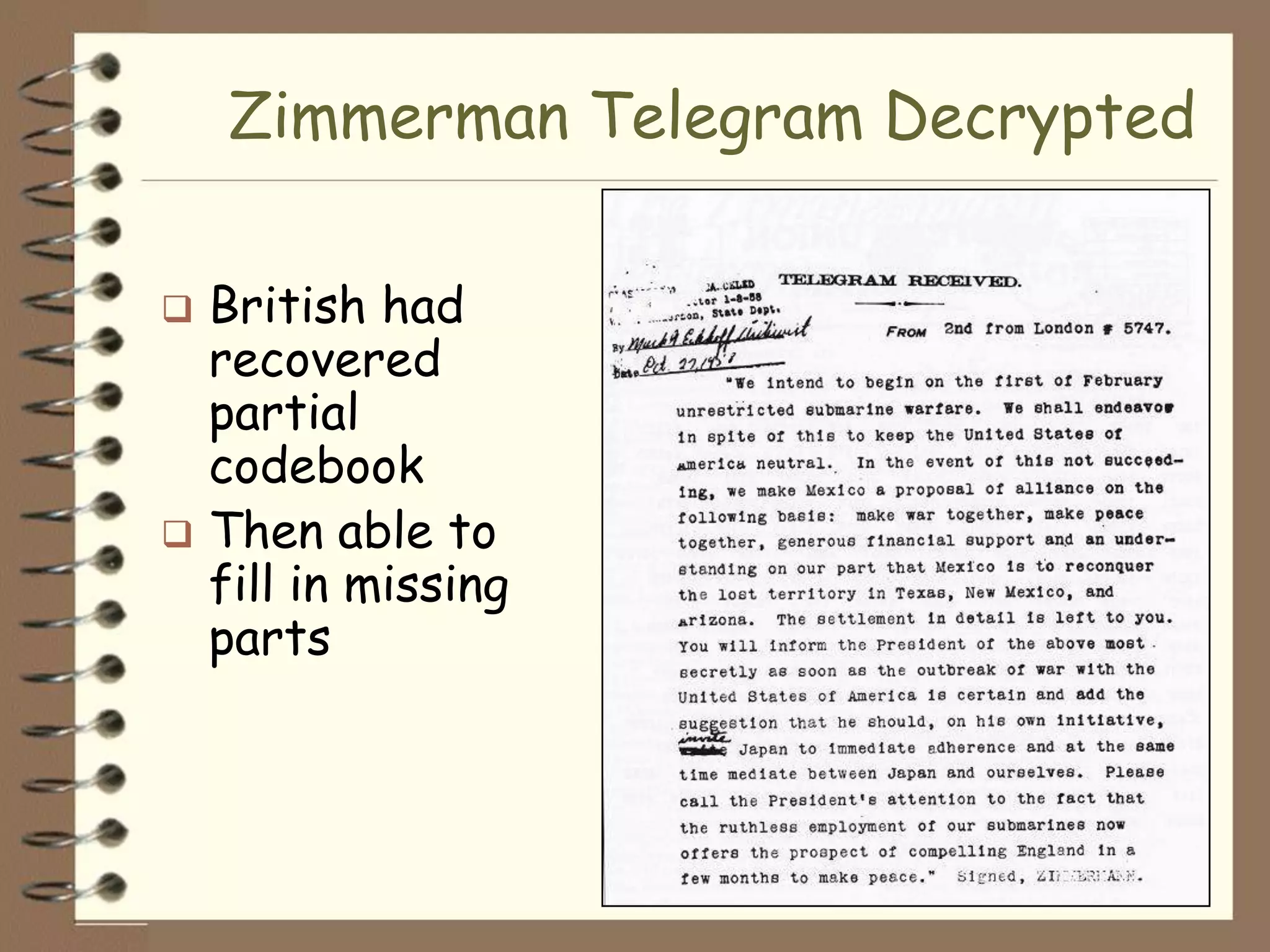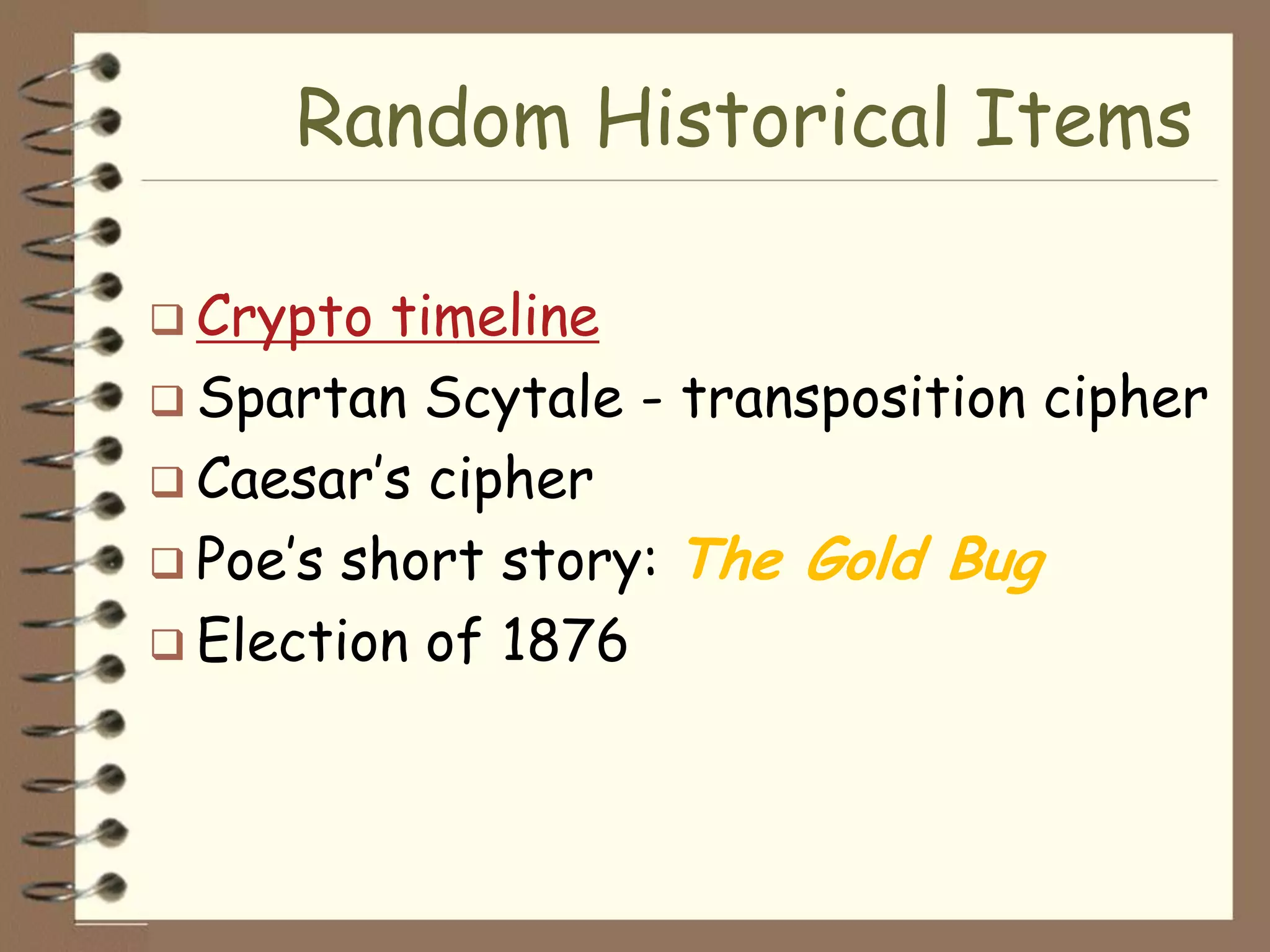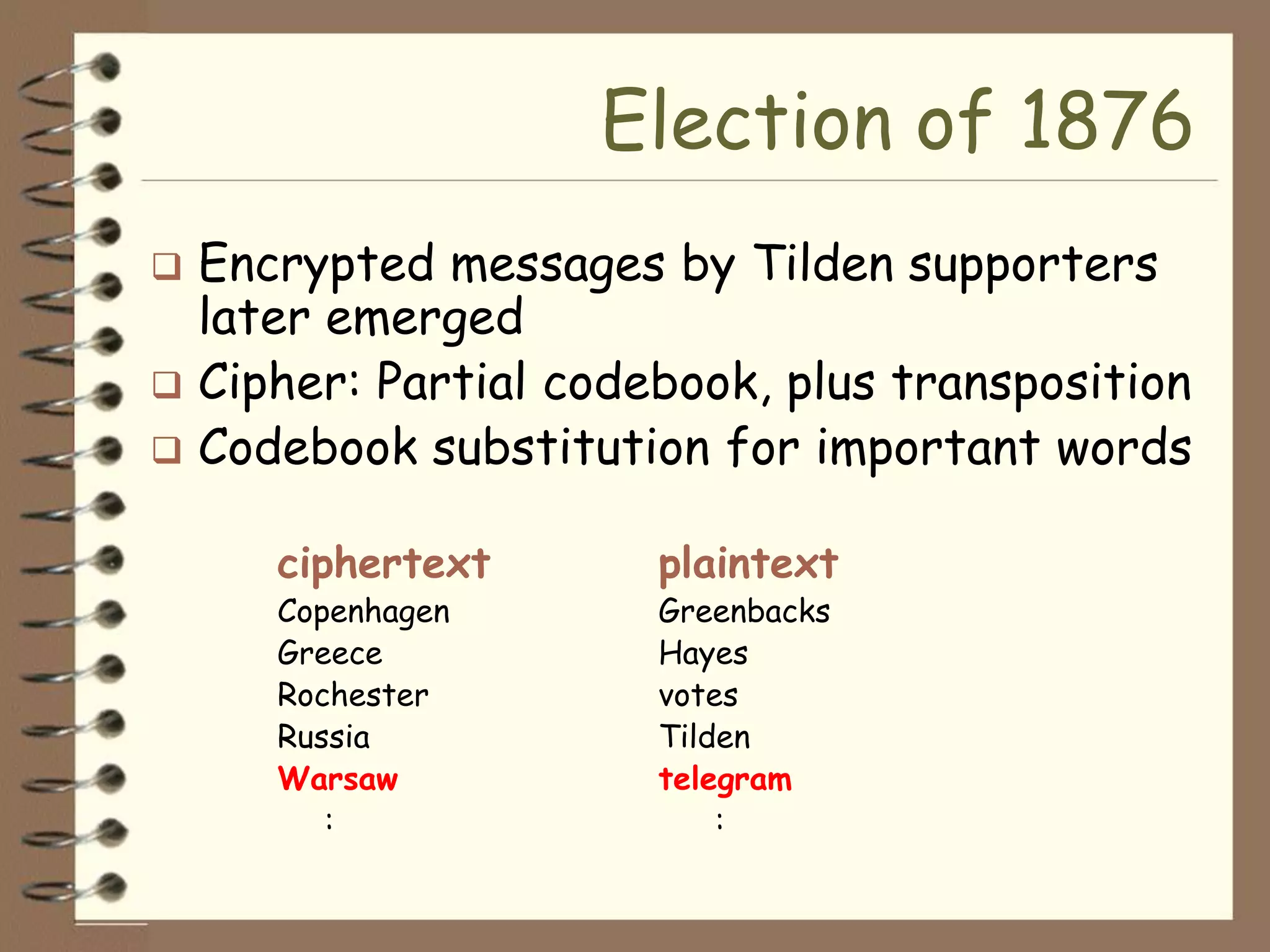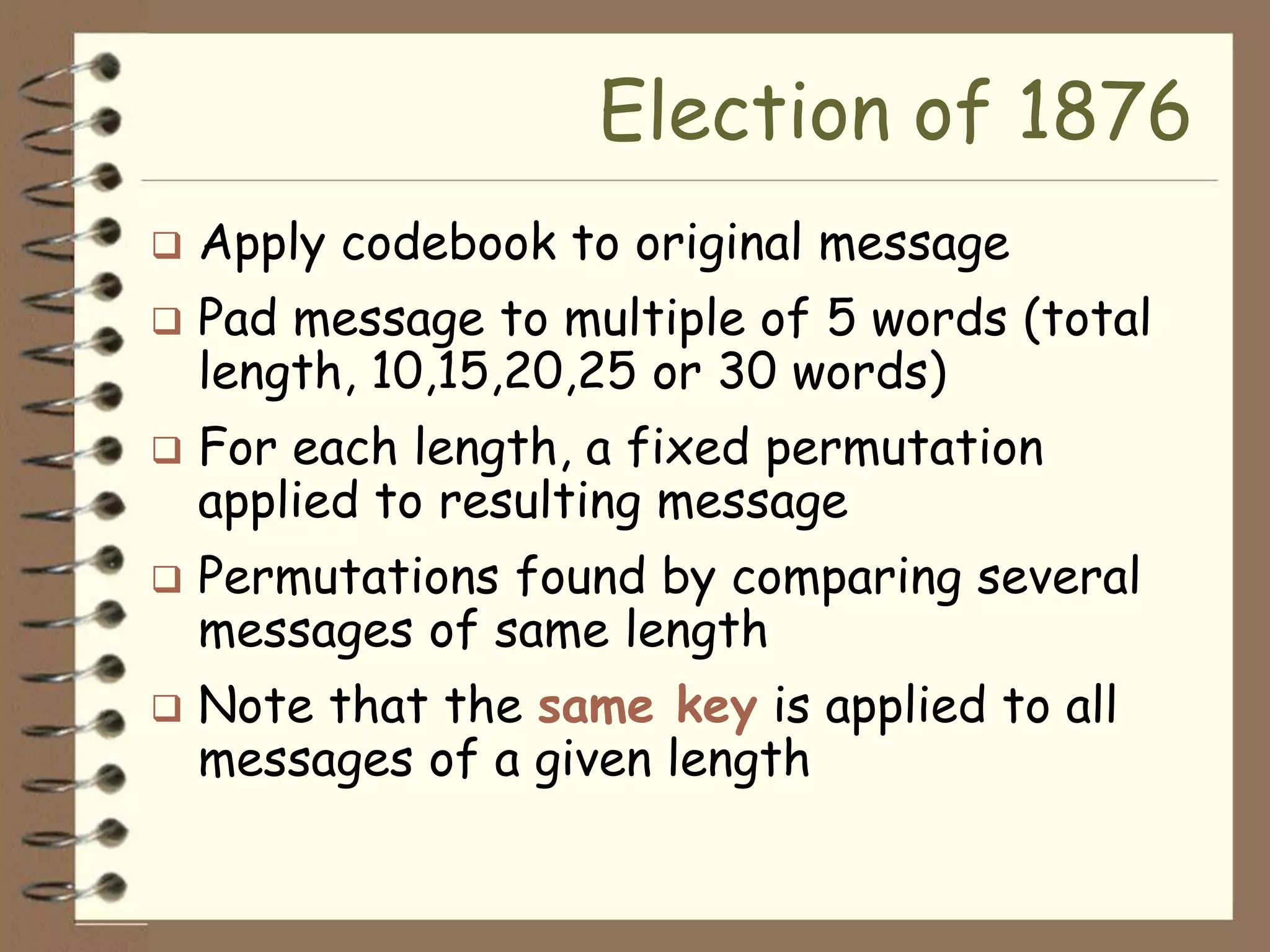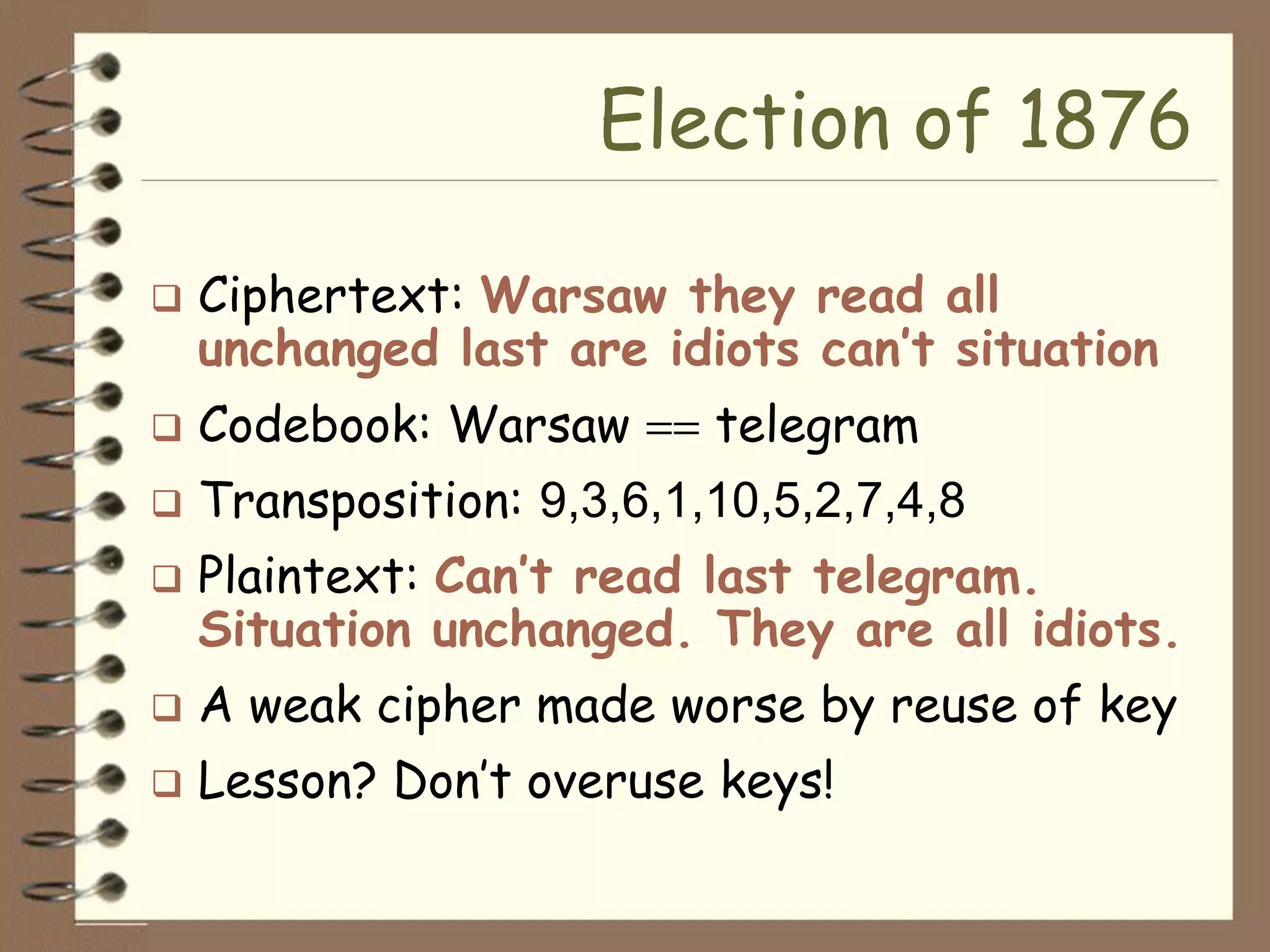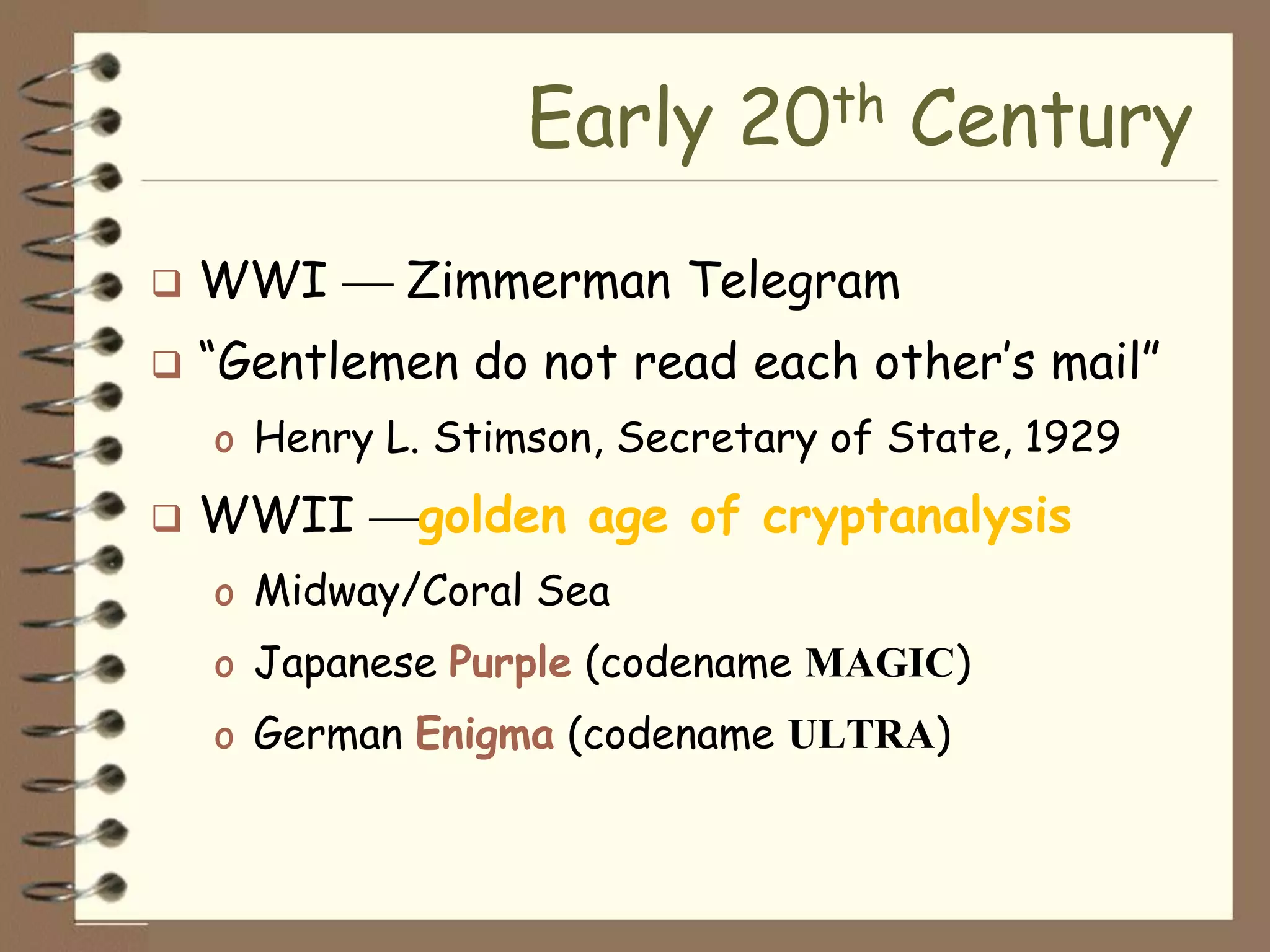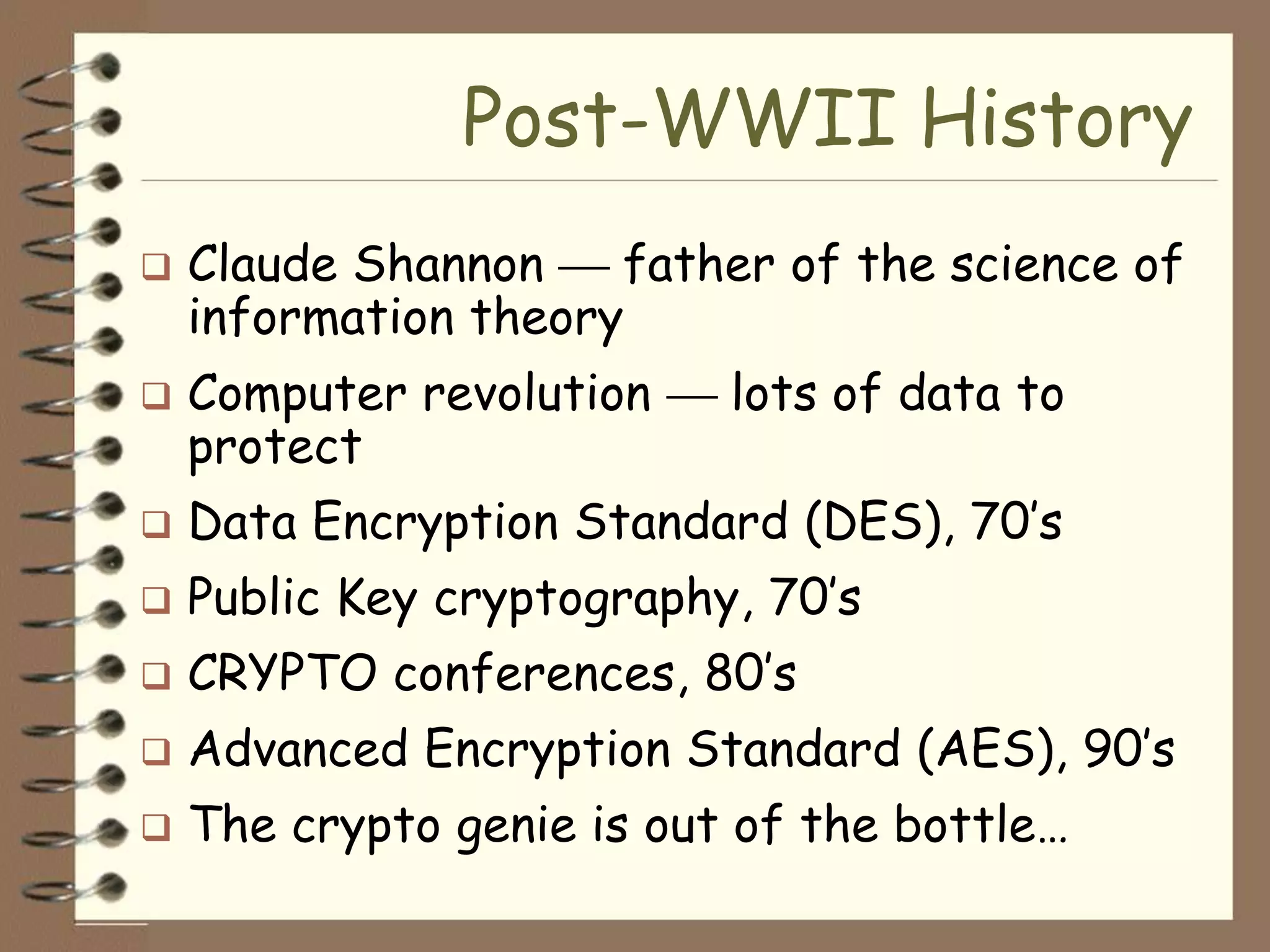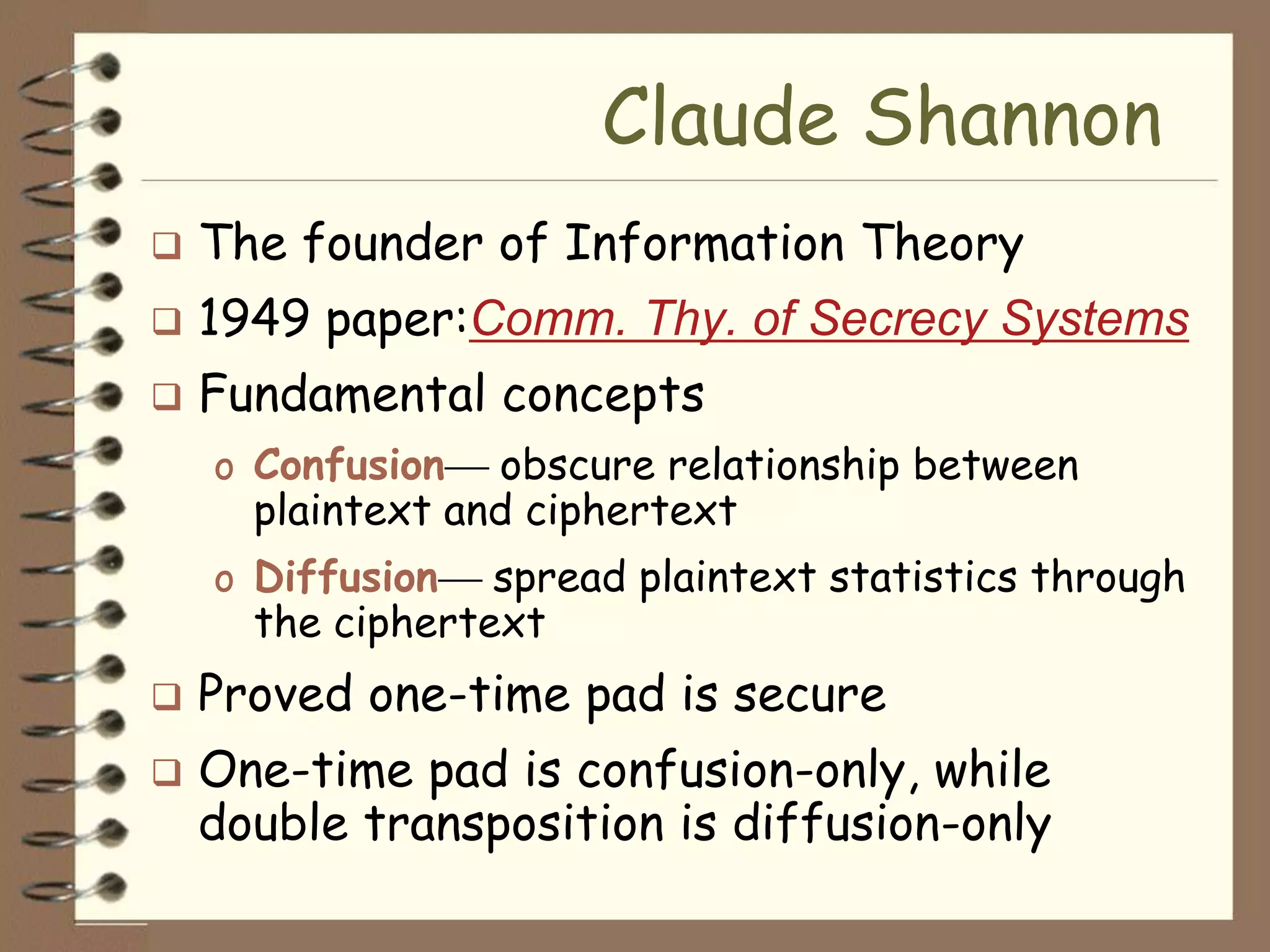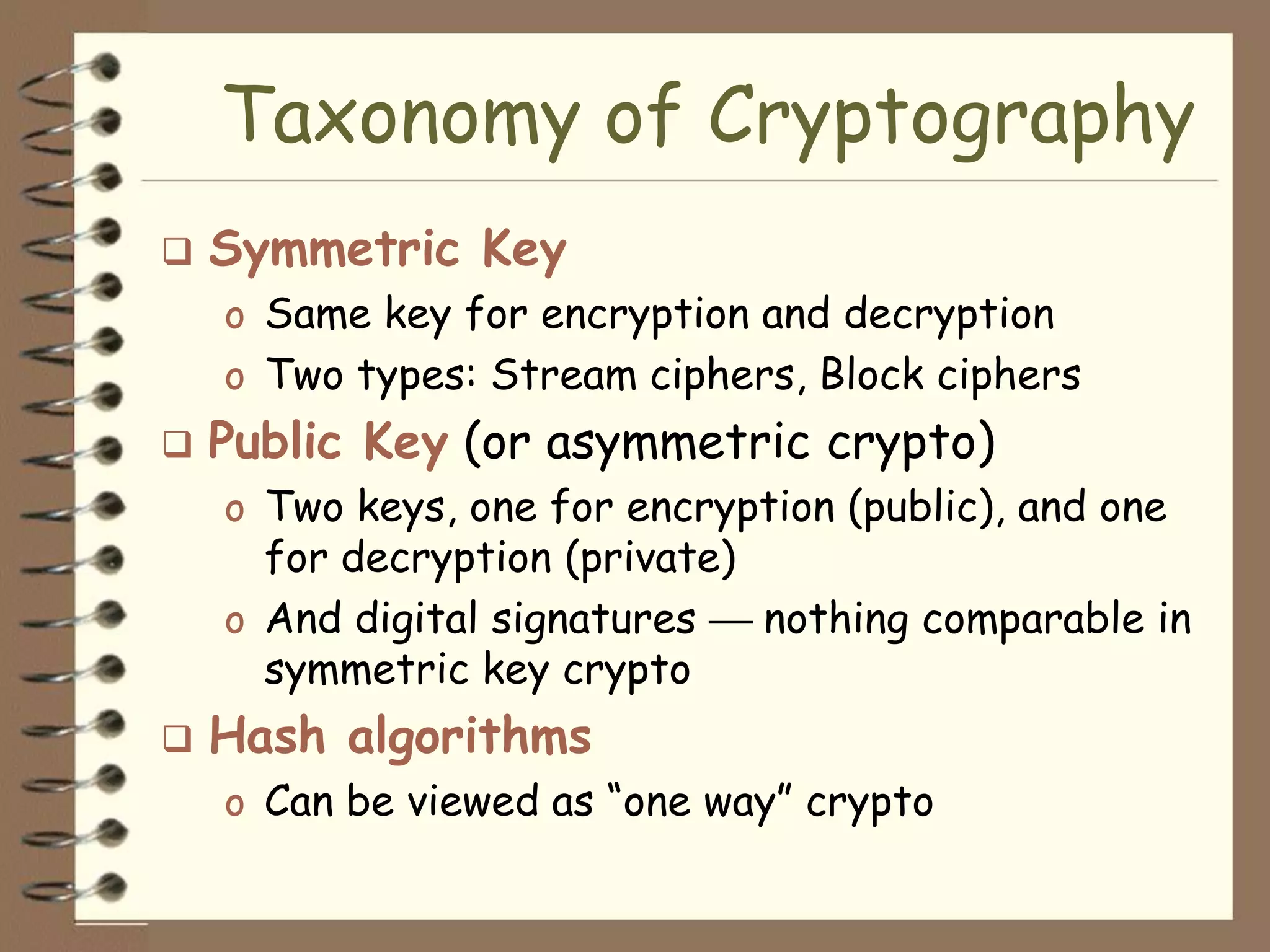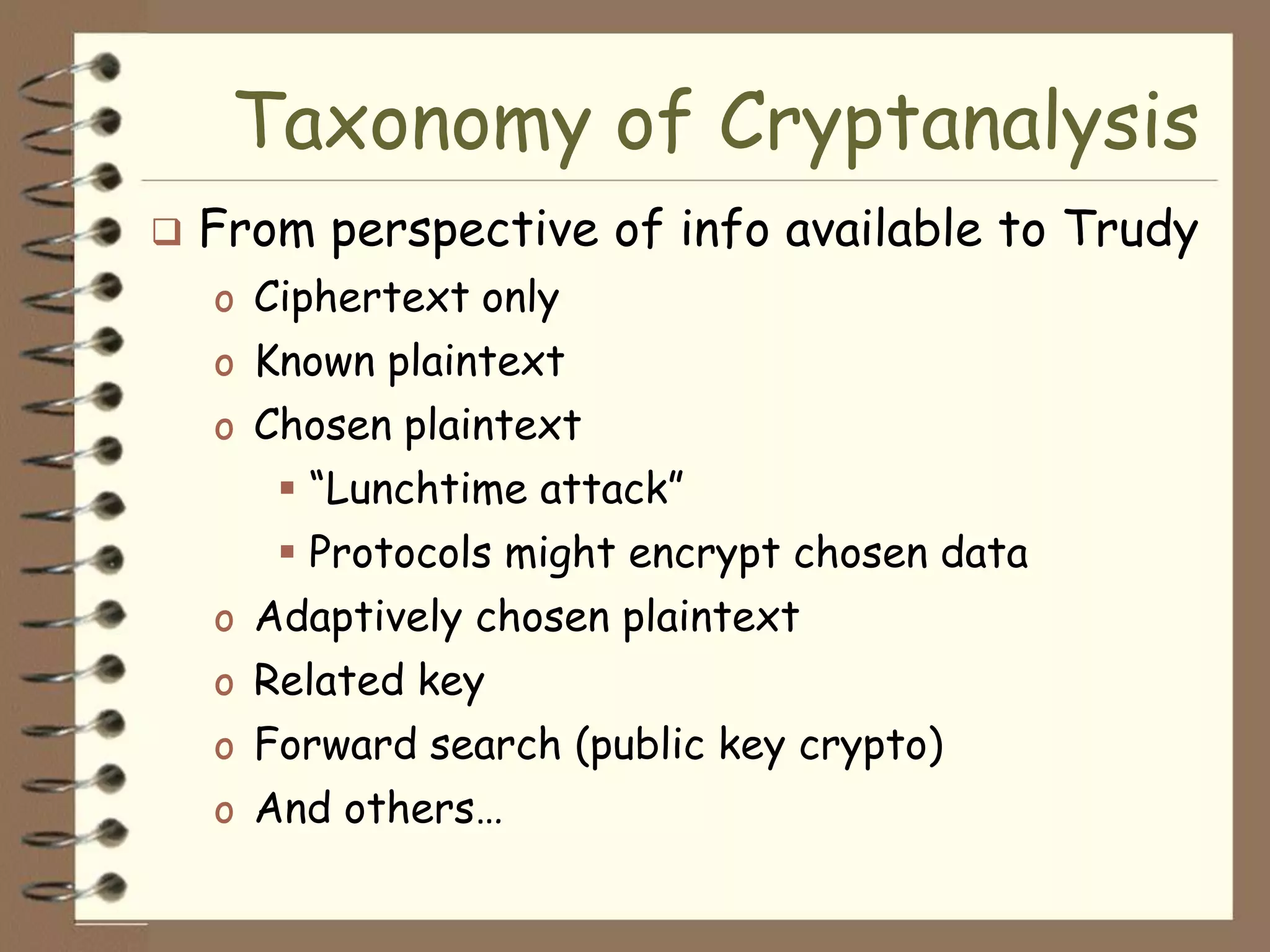Warsaw = Tilden
they = the
read = electoral
all = votes
unchanged = were
last = commission
are = members
idiots = republicans
can't = didn't
situation = steal
Plaintext: Tilden the electoral votes were commission members republicans didn't steal
So the encrypted message suggests that Tilden actually won the electoral votes, but the Republican commission members stole the election anyway. This lends some credibility to Tilden's accusations of bribery regarding the disputed states. Of course, without more context it's impossible to say for certain if this message is authentic. But it demonstrates how codebooks and transpositions could have been used to discuss the election secretly.
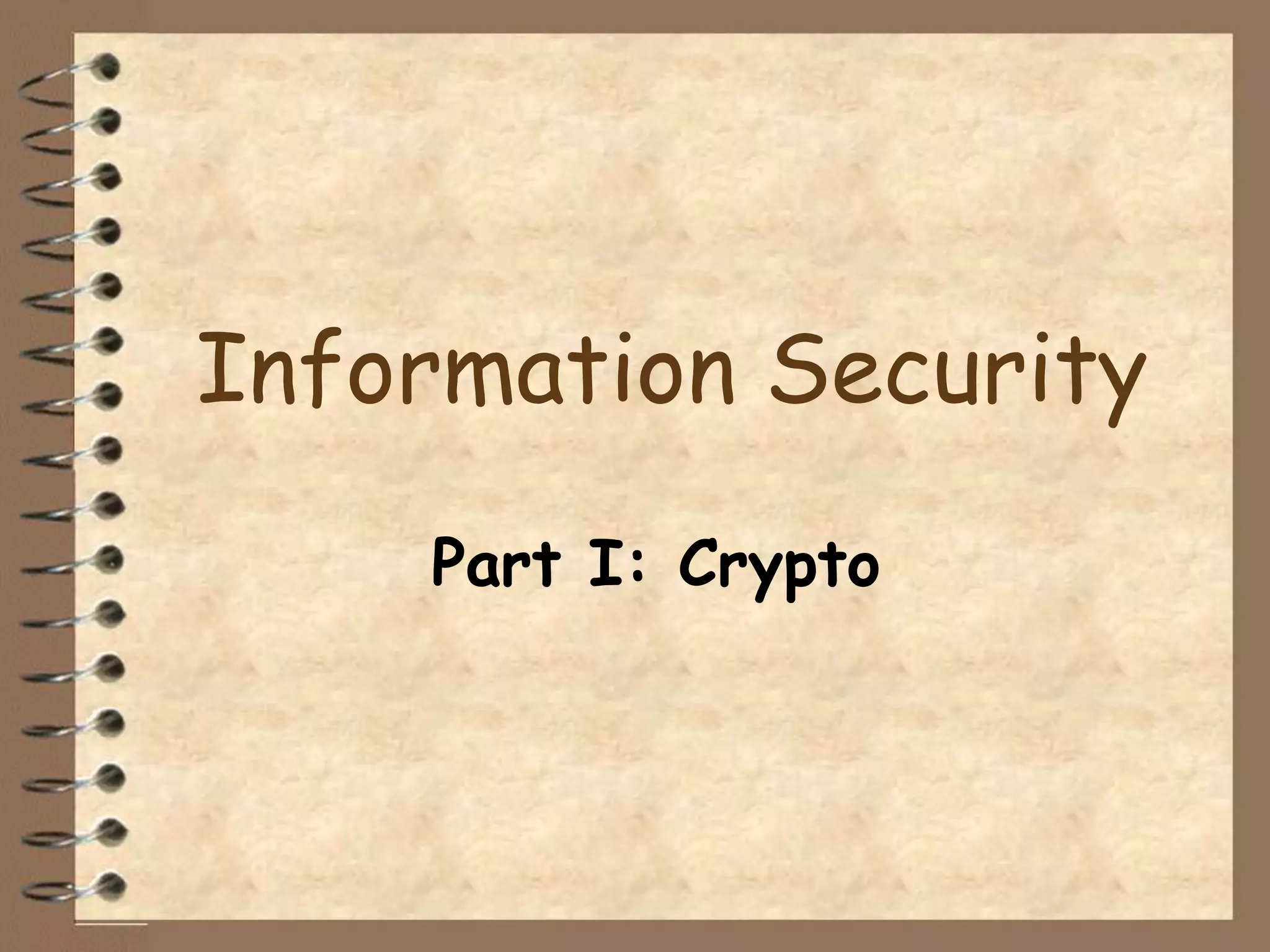
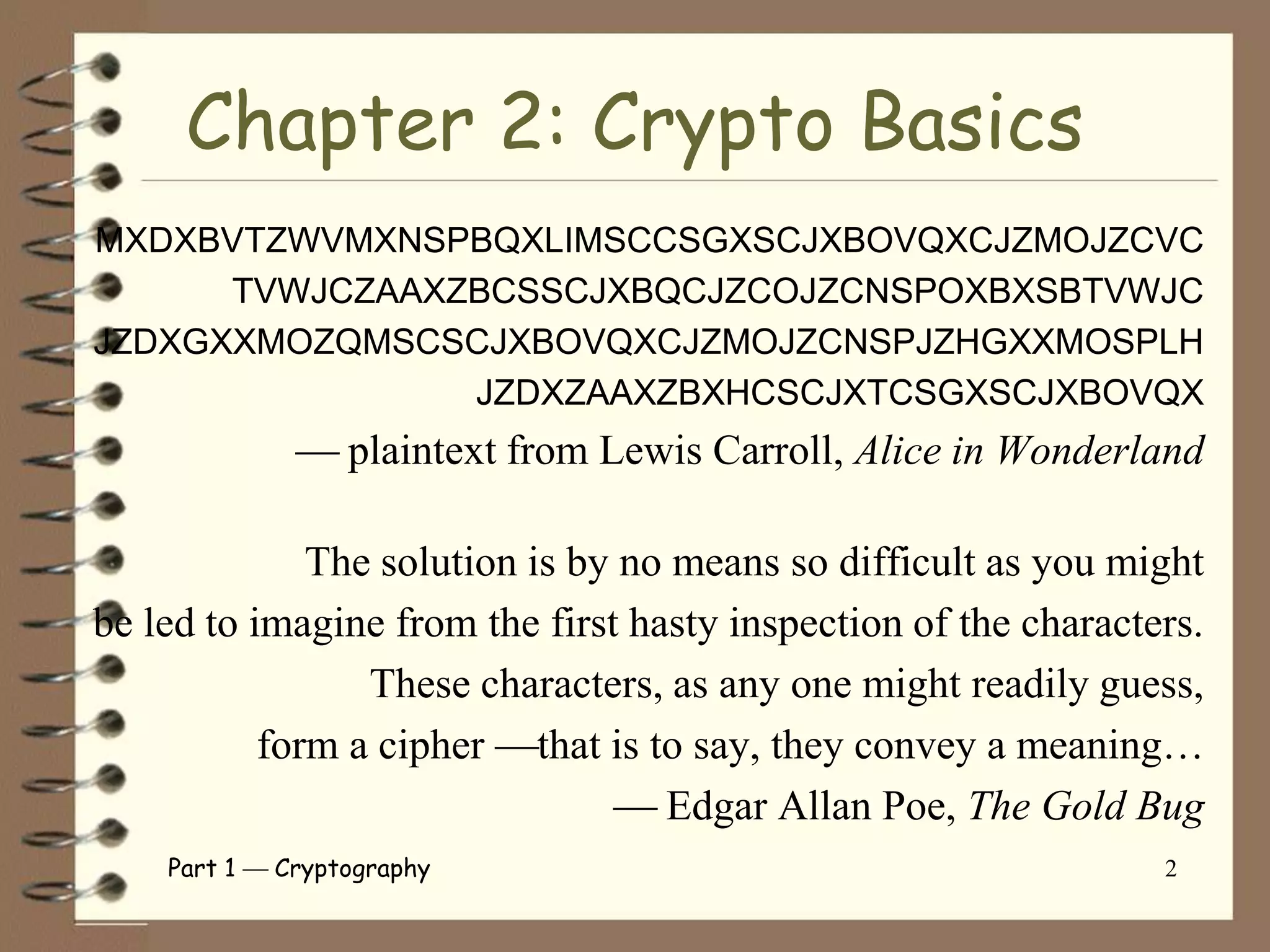

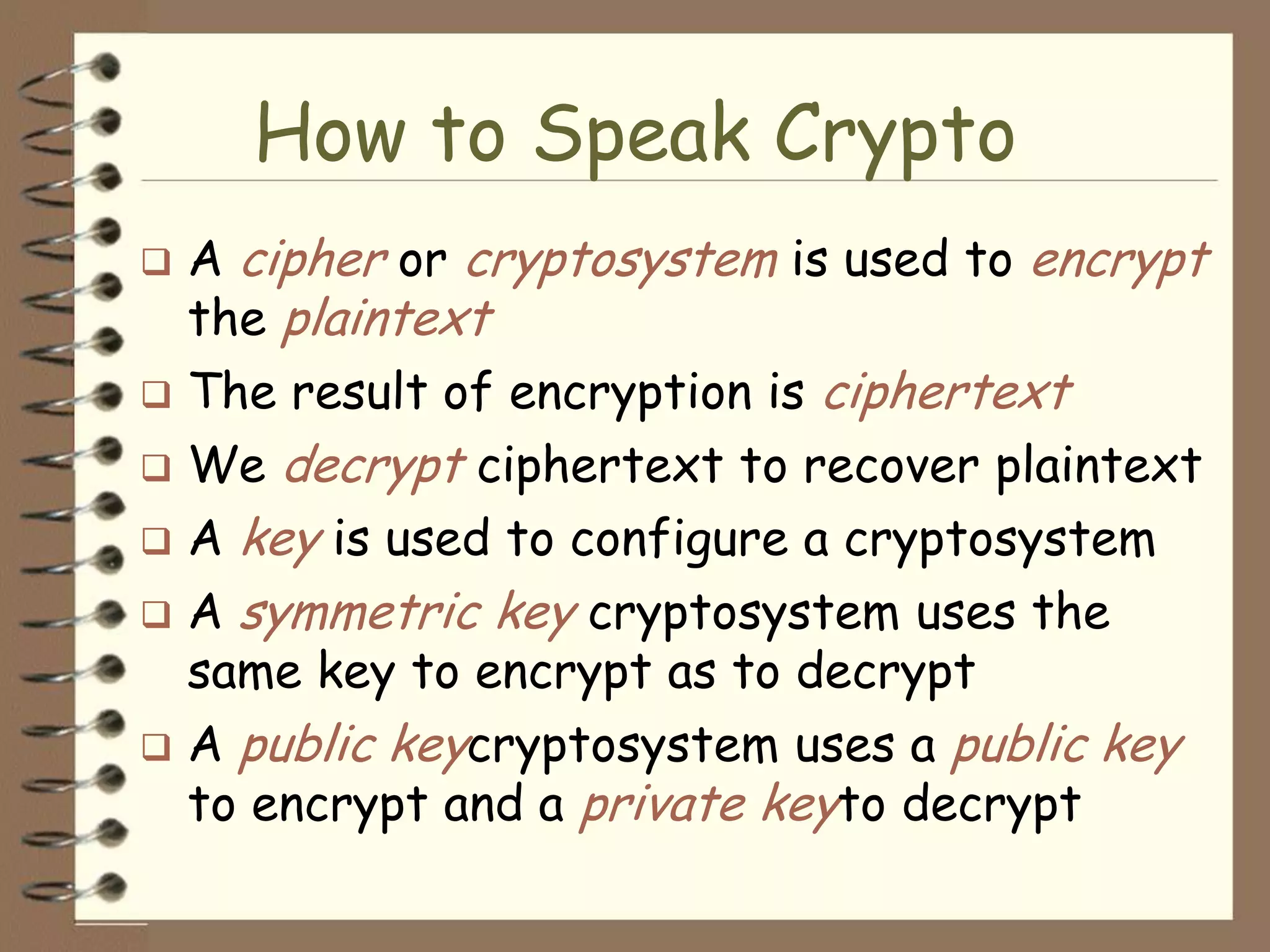
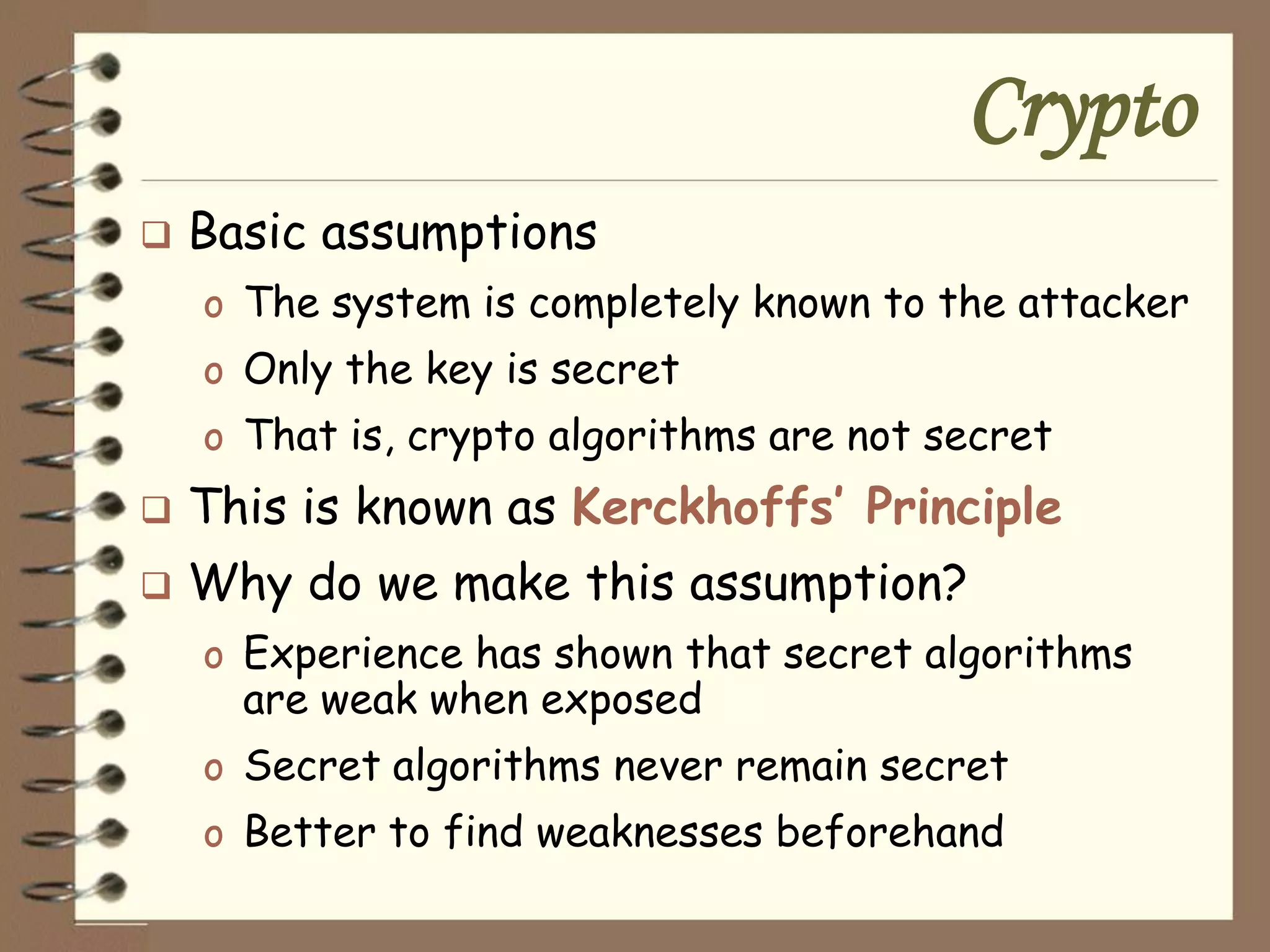
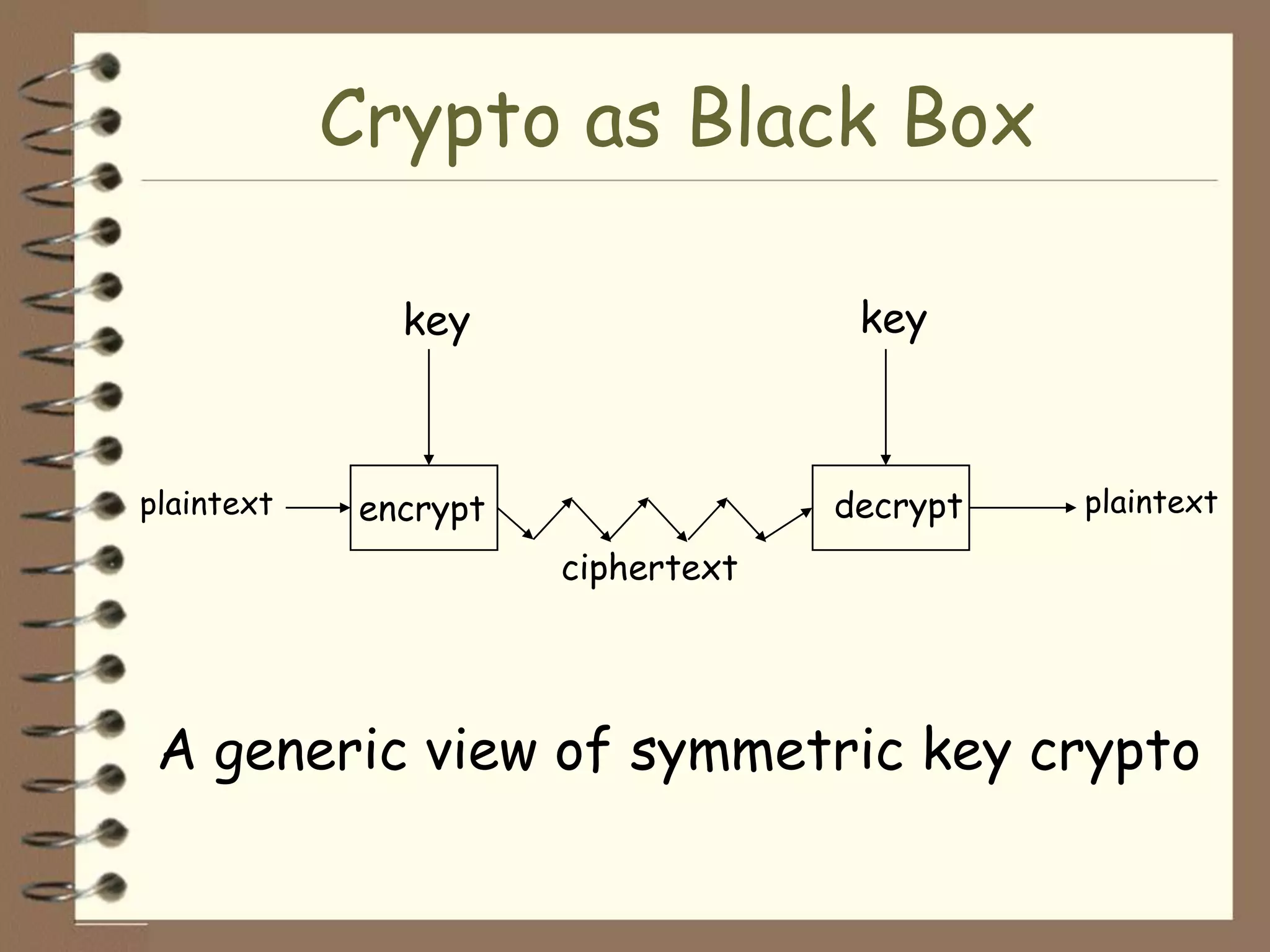
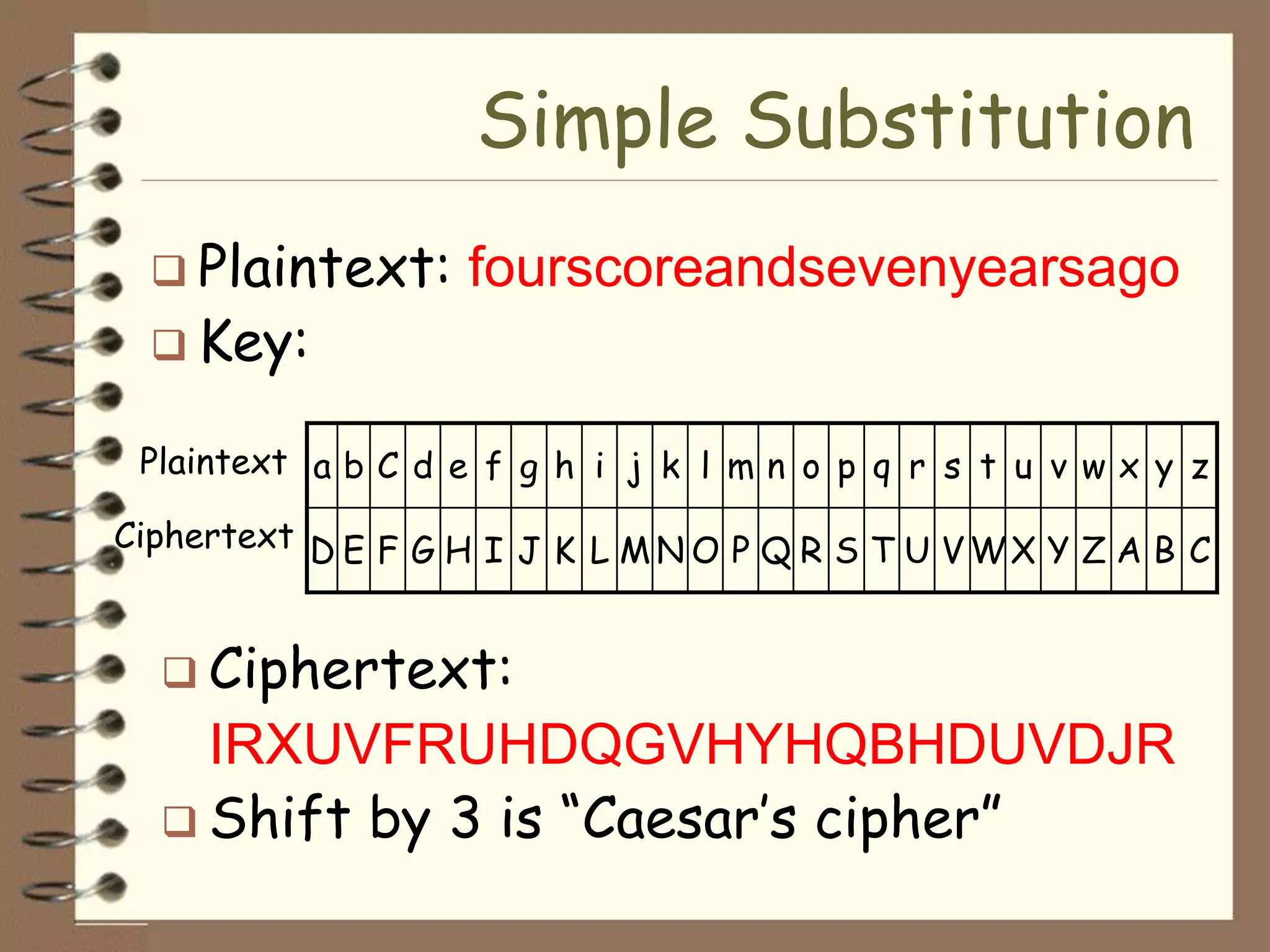
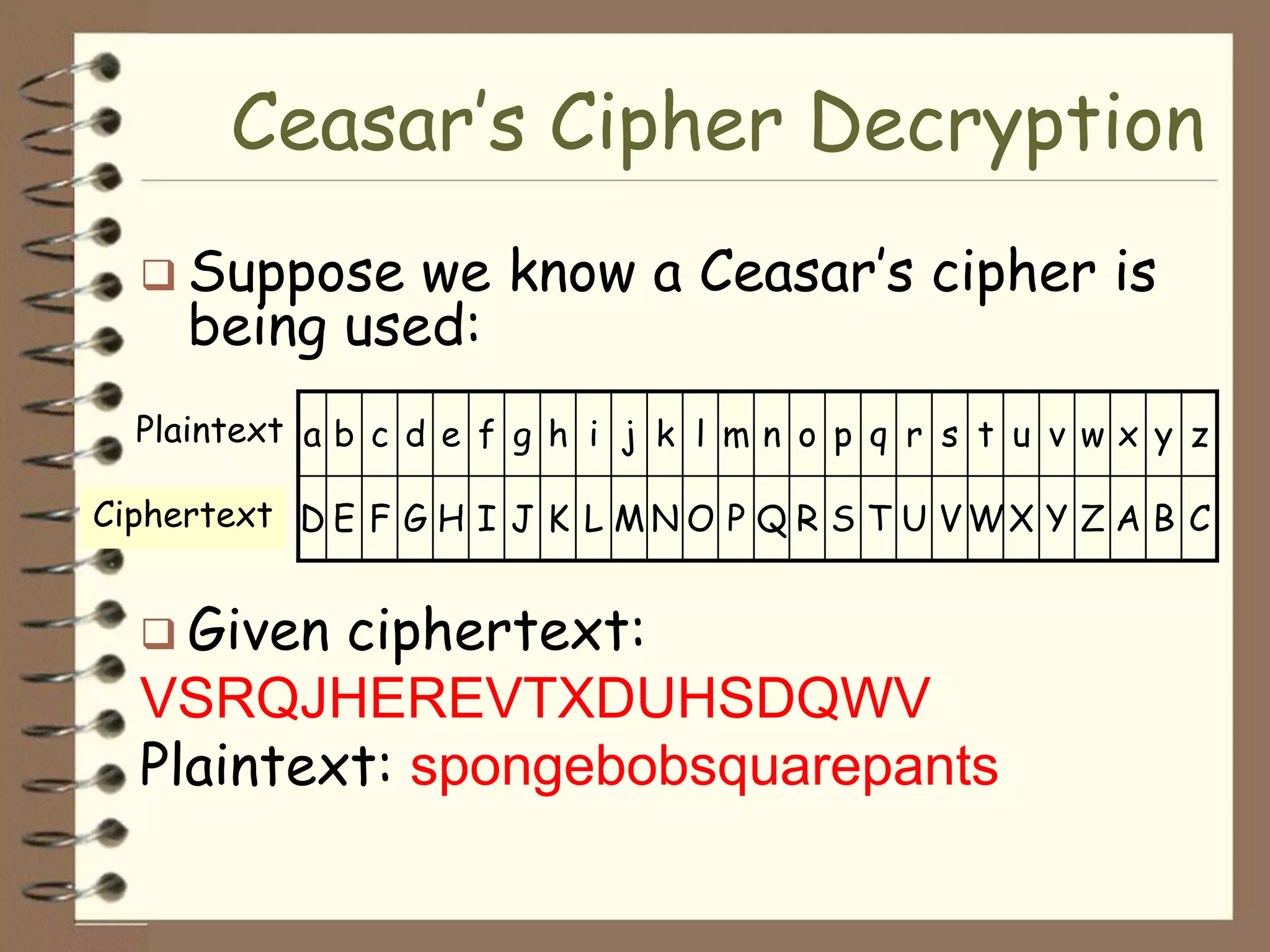
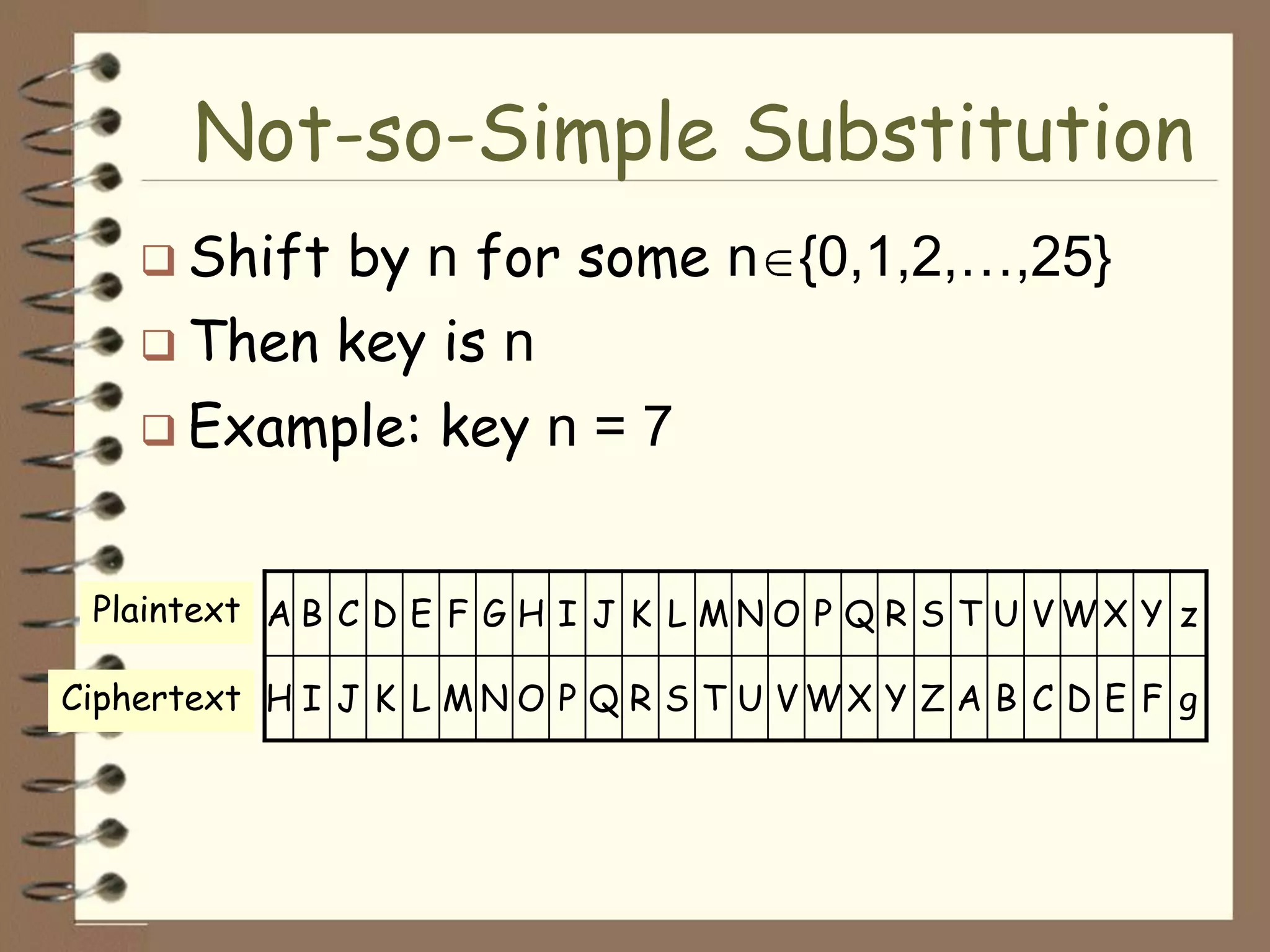

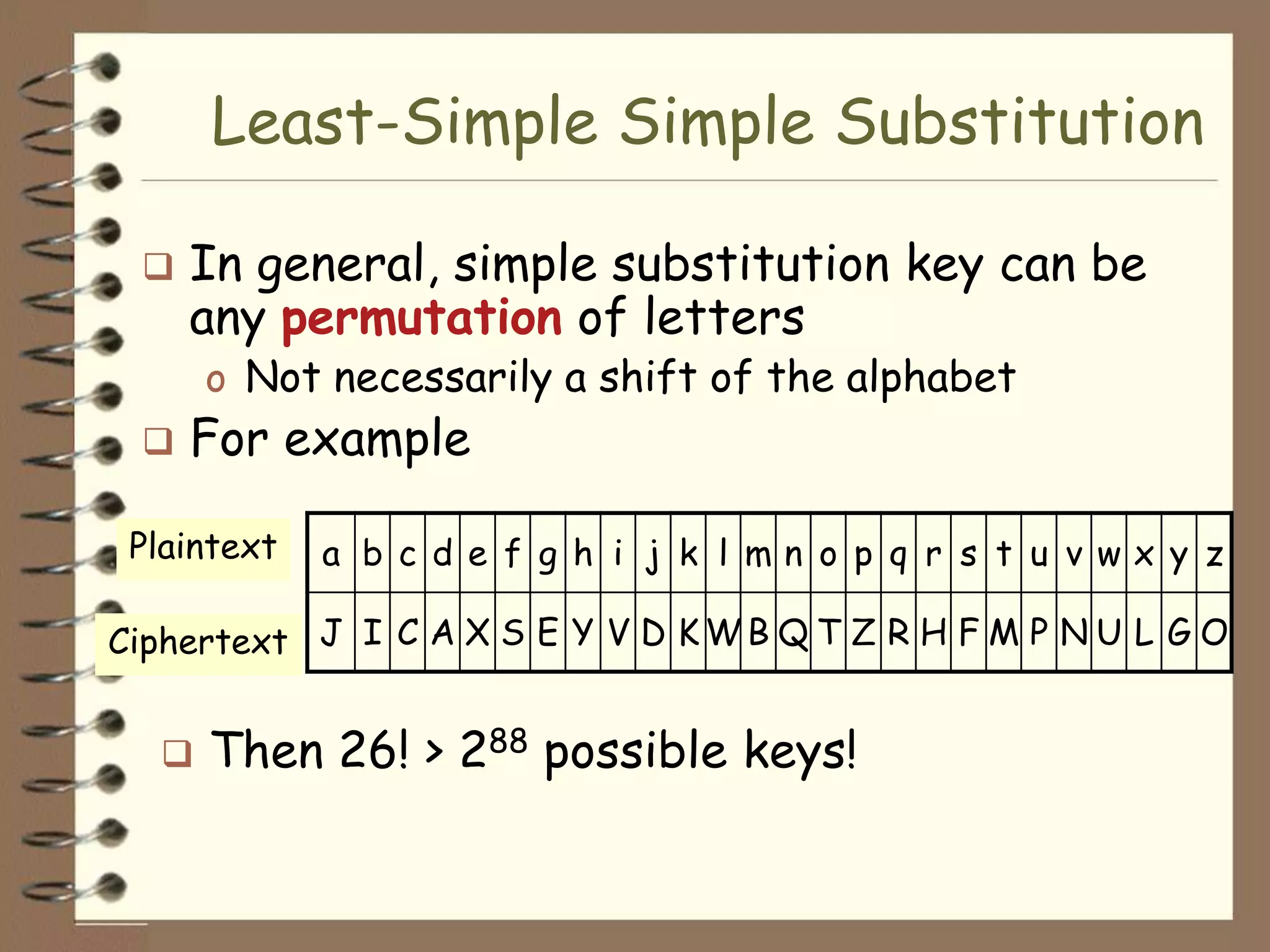
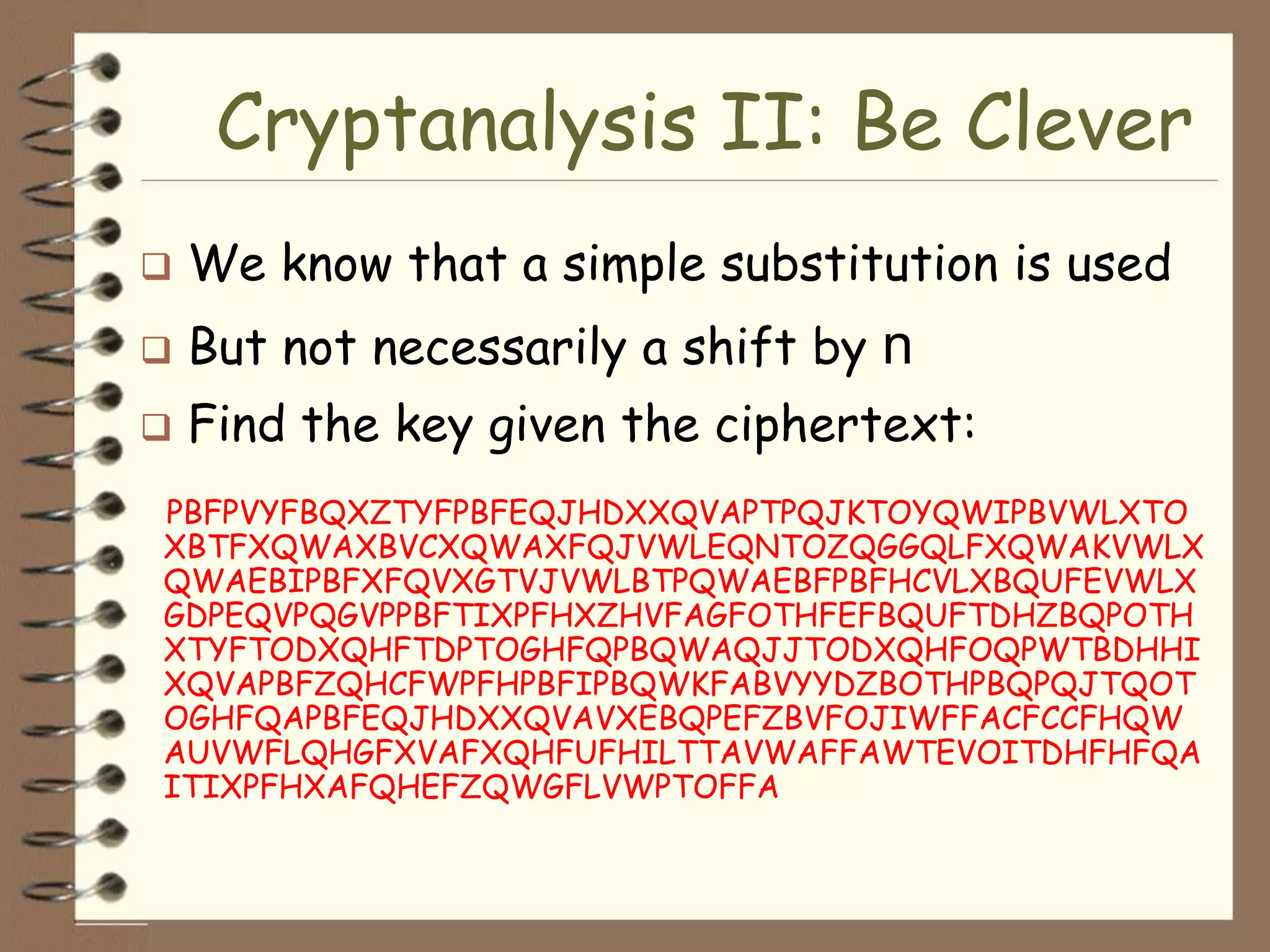
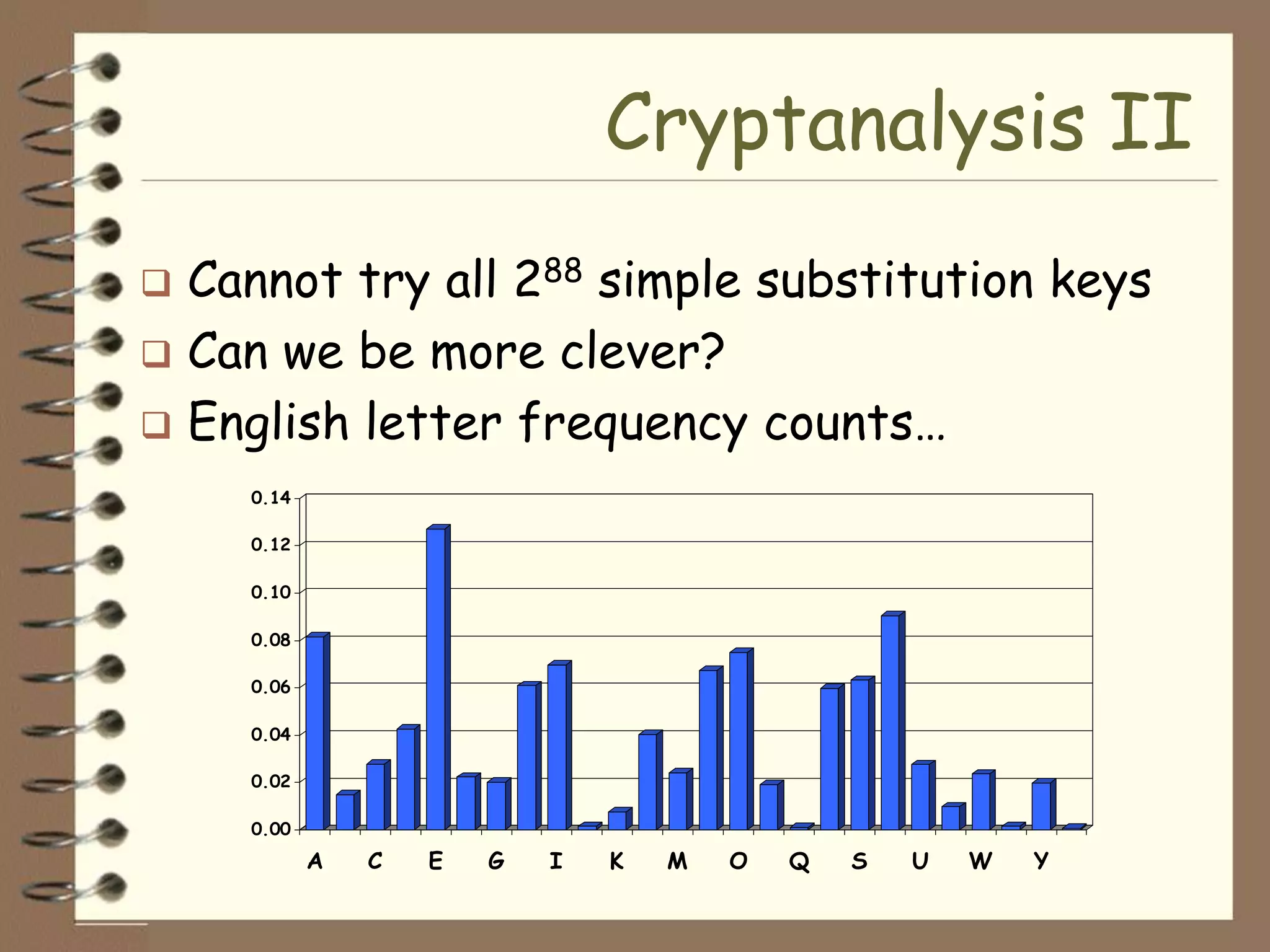
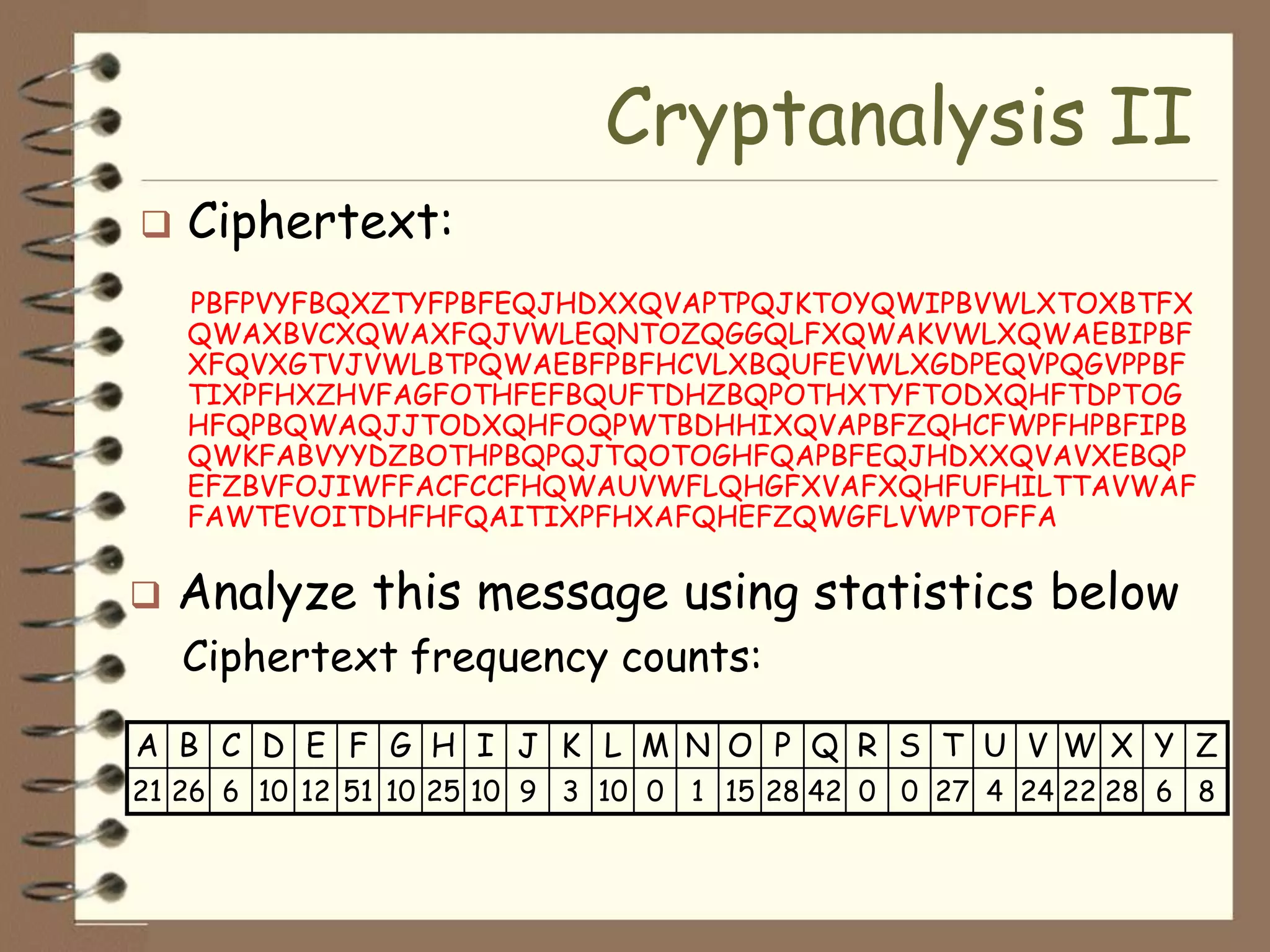
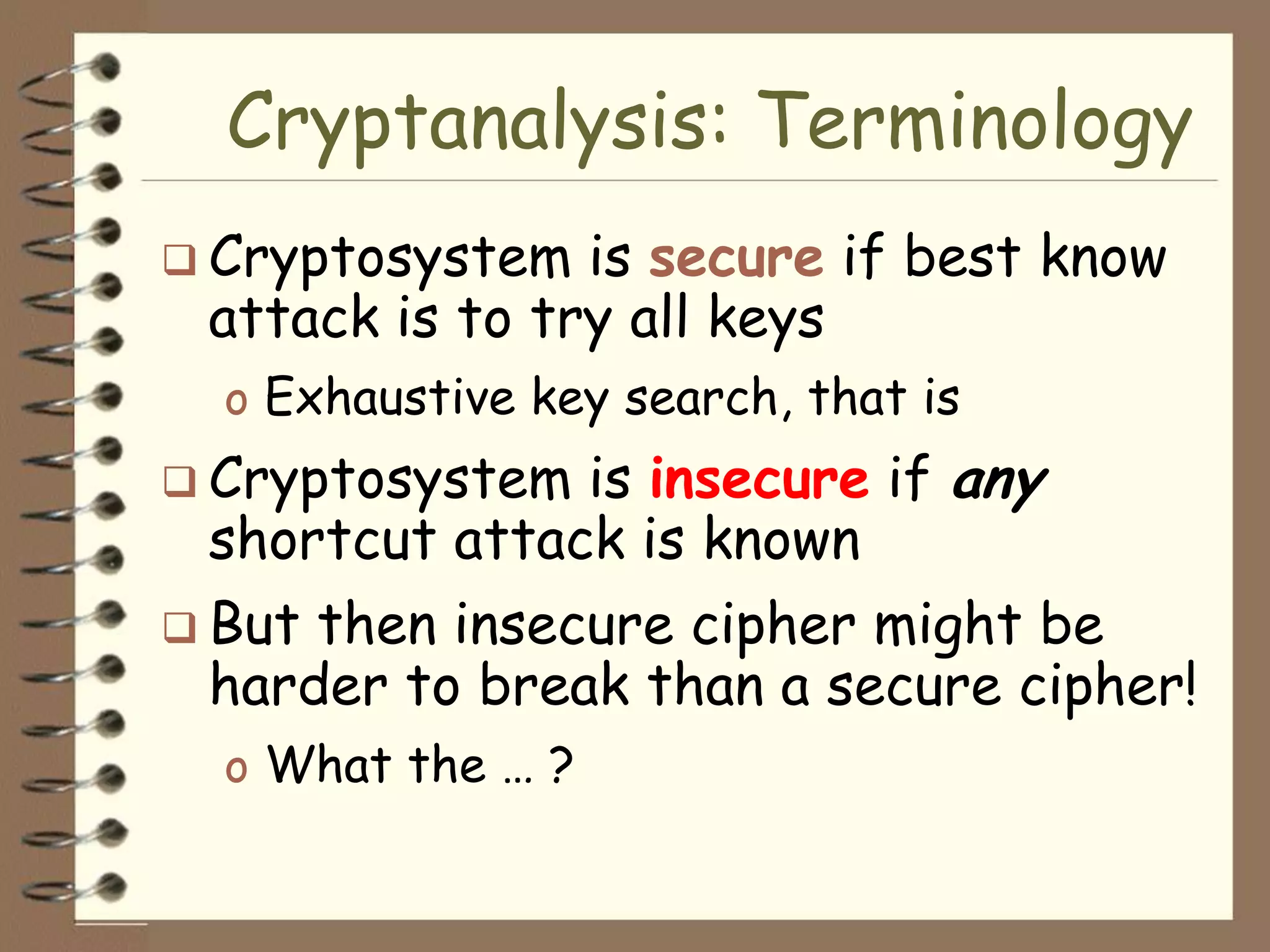
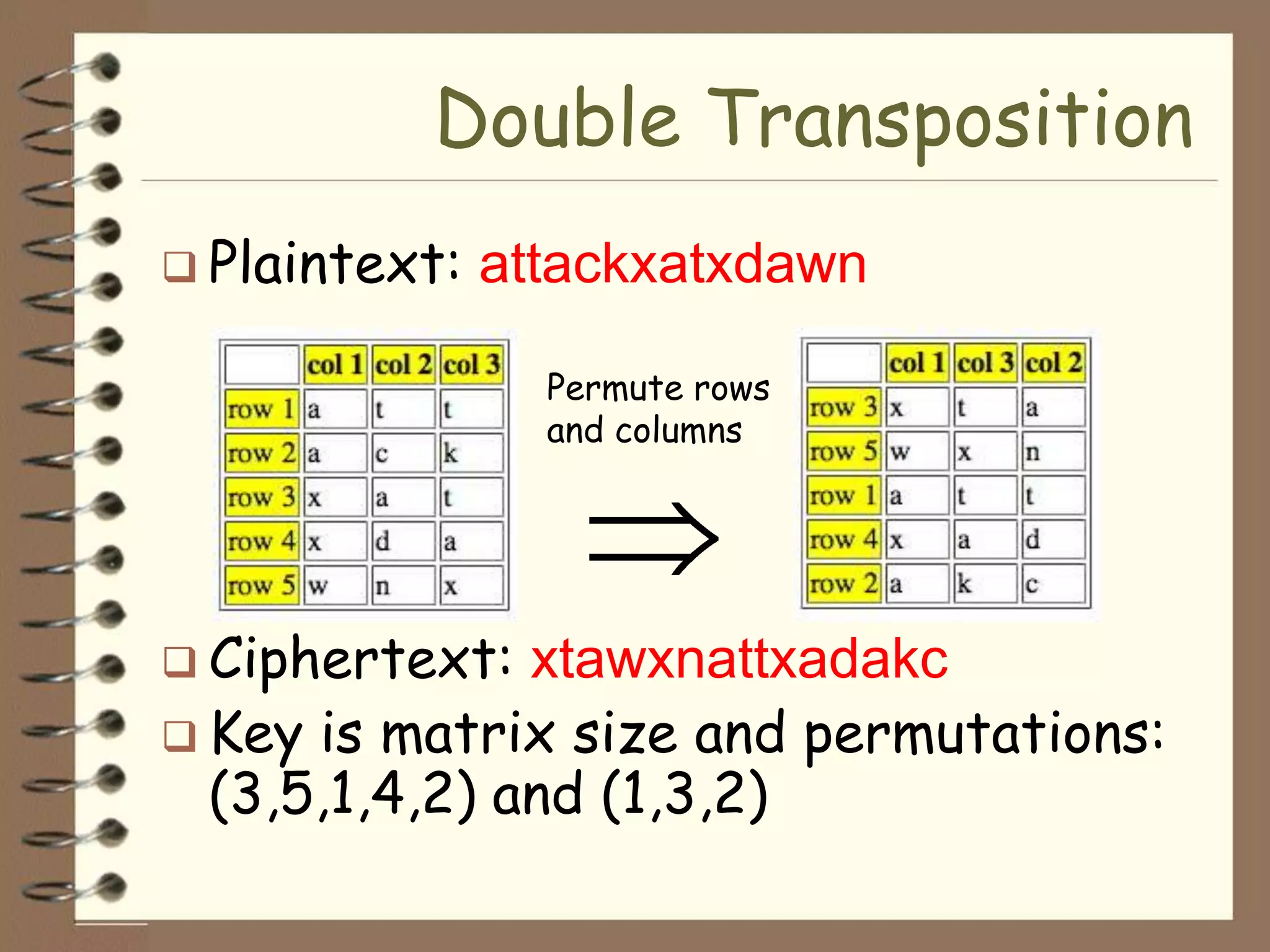
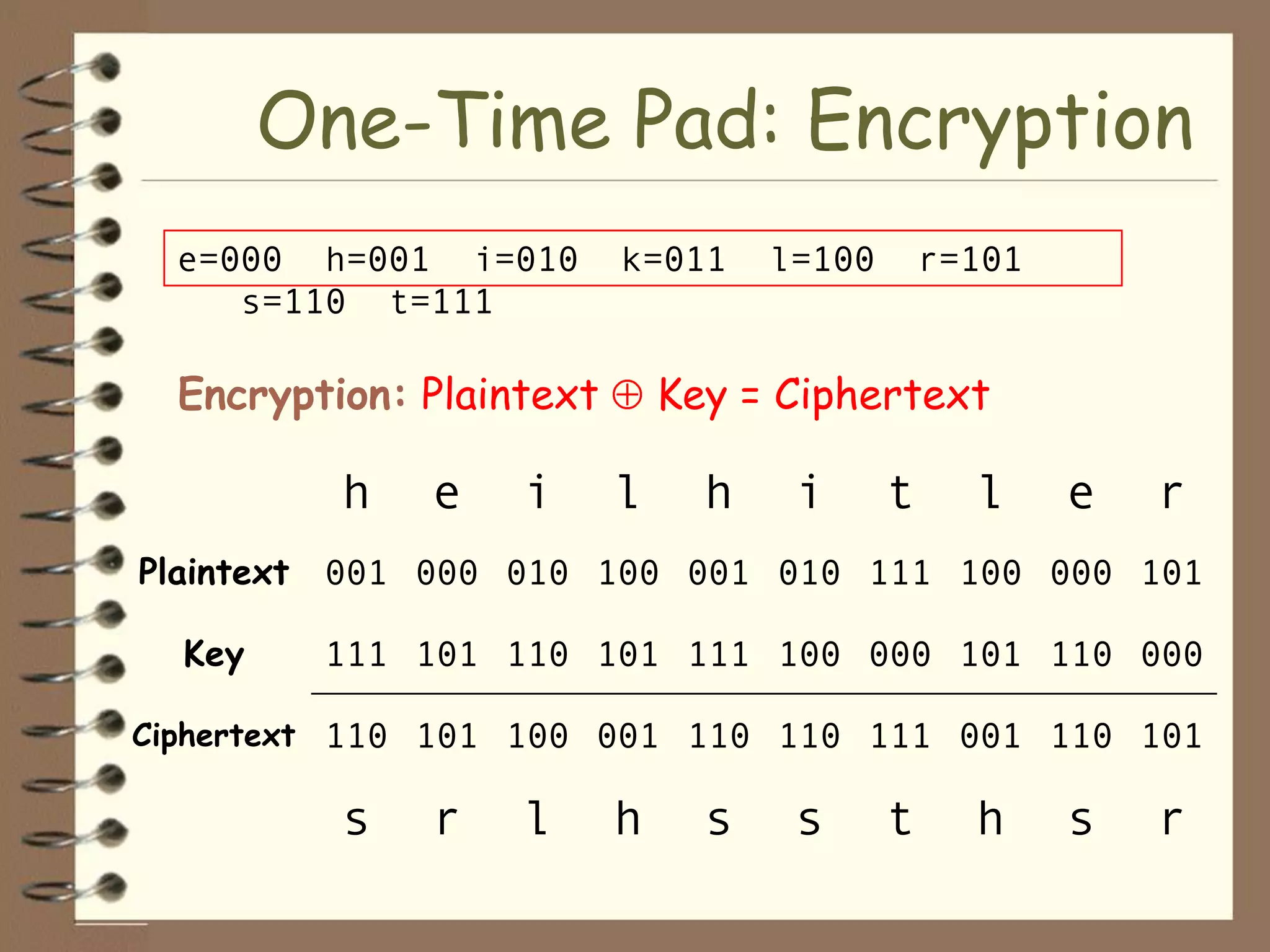

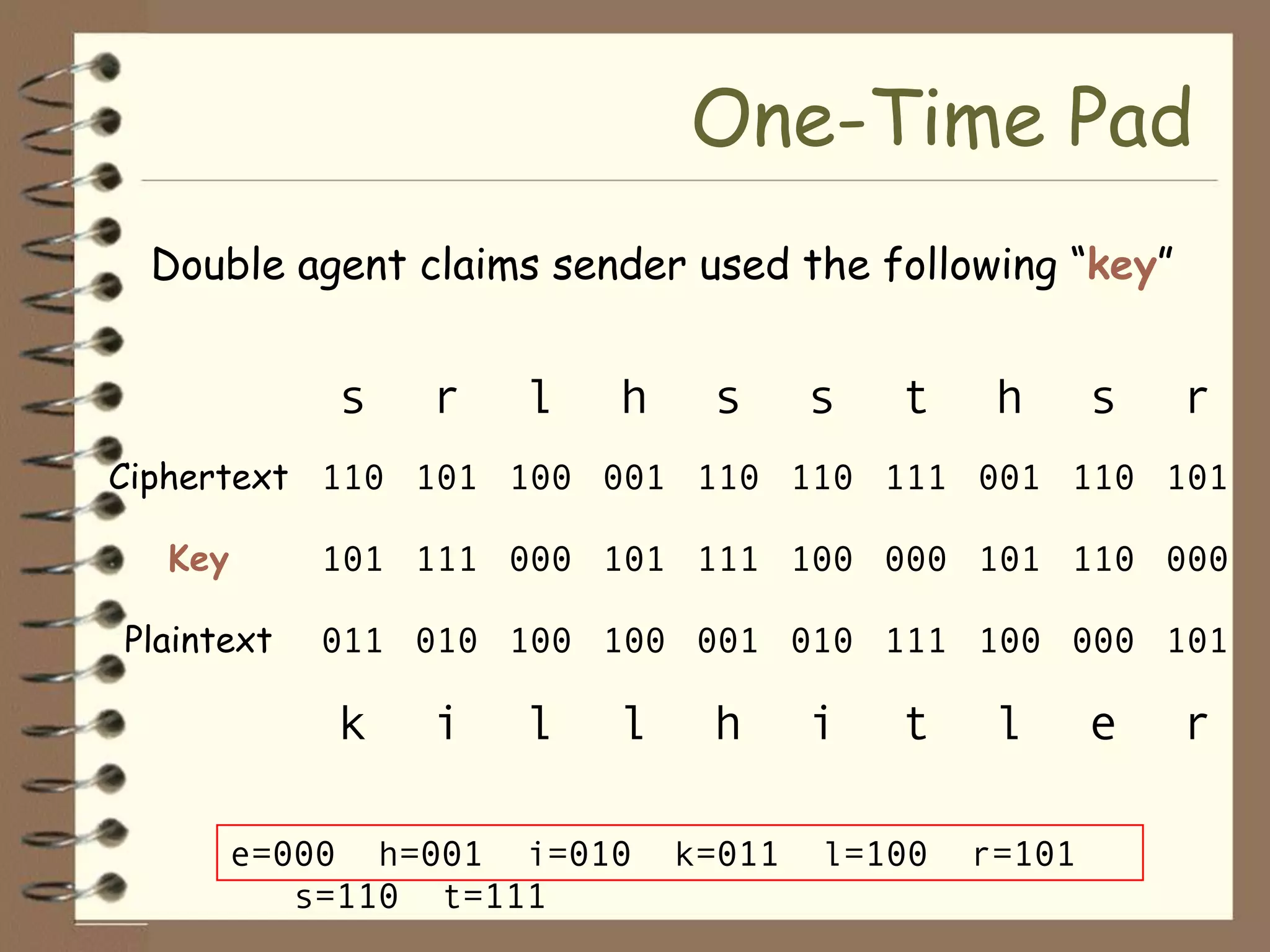


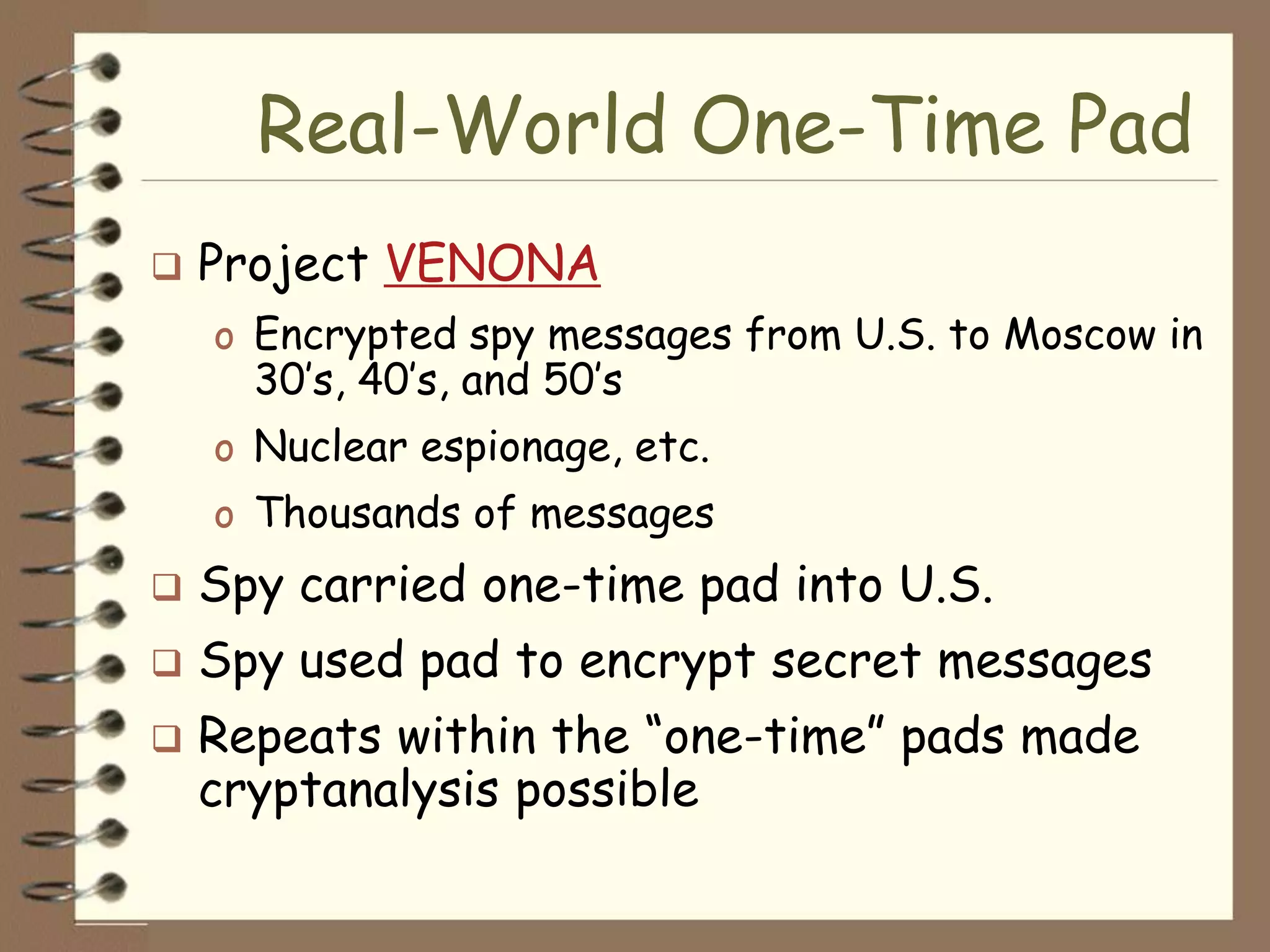
![VENONA Decrypt (1944)
[C% Ruth] learned that her husband [v] was called up by the army but he
was not sent to the front. He is a mechanical engineer and is now working
at the ENORMOUS [ENORMOZ] [vi] plant in SANTA FE, New Mexico. [45
groups unrecoverable]
detain VOLOK [vii] who is working in a plant on ENORMOUS. He is a
FELLOWCOUNTRYMAN [ZEMLYaK] [viii]. Yesterday he learned that
they had dismissed him from his work. His active work in progressive
organizations in the past was cause of his dismissal. In the
FELLOWCOUNTRYMAN line LIBERAL is in touch with CHESTER [ix].
They meet once a month for the payment of dues. CHESTER is interested
in whether we are satisfied with the collaboration and whether there are
not any misunderstandings. He does not inquire about specific items of
work [KONKRETNAYa RABOTA]. In as much as CHESTER knows about
the role of LIBERAL's group we beg consent to ask C. through LIBERAL
about leads from among people who are working on ENOURMOUS and in
other technical fields.
“Ruth” == Ruth Greenglass
“Liberal” == Julius Rosenberg
“Enormous” == the atomic bomb](https://image.slidesharecdn.com/lecture2-120501100441-phpapp01/75/Lecture-2-23-2048.jpg)
